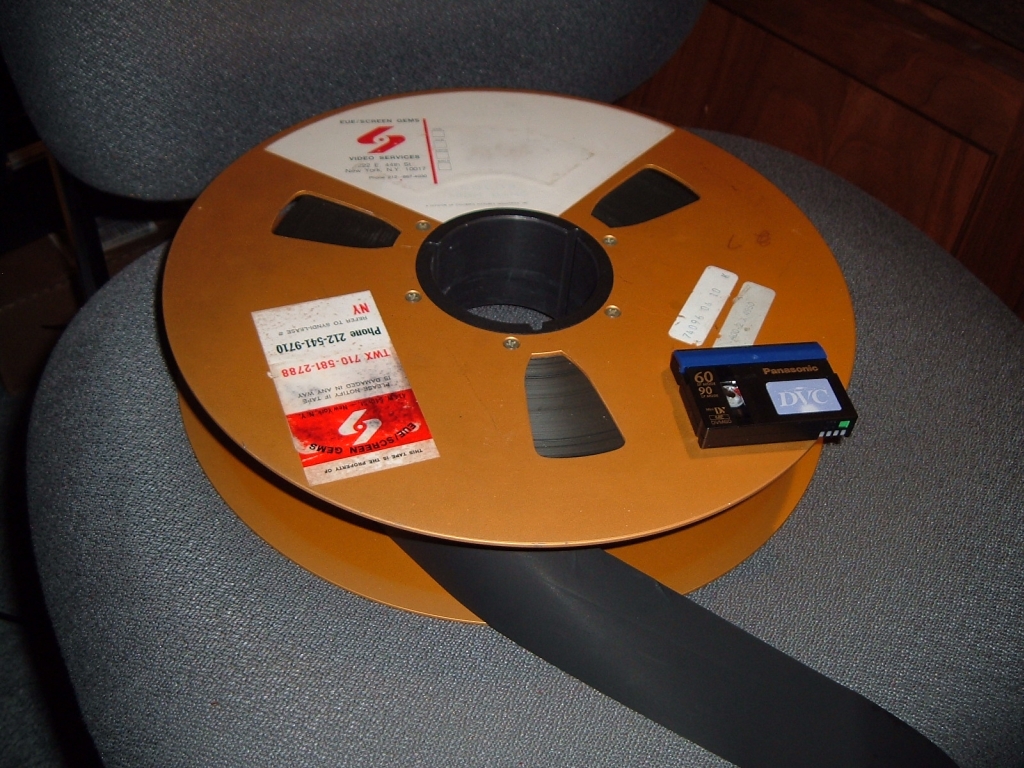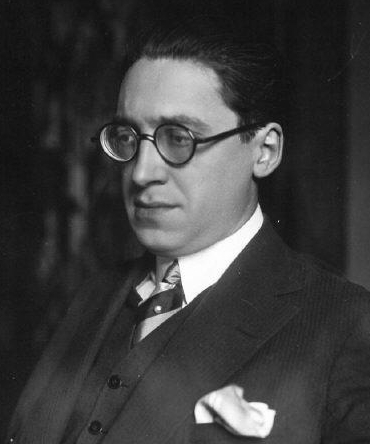|
Magdana's Donkey
''Magdana's Donkey'' ( ka, მაგდანას ლურჯა, Magdanas Lurja, russian: Лурджа Магданы, Lurja magdani) is a 1955 Georgian black-and-white social-themed drama film co-directed by Revaz Chkheidze and Tengiz Abuladze based on a short story of the same name by Ekaterine Gabashvili. Plot In a small Georgian village at the beginning of the 20th century(? 1895), a widow (Magdana) and her three children (Sopo, Mikho, and Kato) live in poverty, making ends meet by selling yoghurt in the city. The children find a sick abandoned donkey and bring it back to health and then the family's luck begins to change for the better. Then the donkeys old owner (Mitua) sees the donkey in the city and wants it back. Production This film was the debut feature of Tengiz Abuladze and Revaz Chkheidze. ''Magdana's Donkey'' was acclaimed as the start of a “new wave” in Soviet cinema. The leading role (Magdana) was played by Georgian actress Dudukhana Tserodze. The film ... [...More Info...] [...Related Items...] OR: [Wikipedia] [Google] [Baidu] |
Rezo Chkheidze
Revaz "Rezo" Chkheidze ( ka, რევაზ "რეზო" ჩხეიძე; 8 December 1926 – 3 May 2015) was a Georgian film director, People's Artist of the USSR, best known for his Soviet-era drama films, including his 1964 World War II-themed ''Father of a Soldier''. Biography Born in Kutaisi in the family of the writer Davit Chkheidze (he would be executed during the Great Purge in 1937), Chkheidze studied acting at Tbilisi State Institute of Theatre from 1943 to 1946 and continued his education under Sergei Yutkevich and Mikhail Romm at VGIK in Moscow from 1949 to 1953. Chkheidze directed twelve films and a TV miniseries between 1953 and 2008. He rose to fame with ''Magdana's Donkey'', co-directed with Tengiz Abuladze, which won the Best Fiction Short award at the 1956 Cannes Film Festival. His 1964 film ''Father of a Soldier'' was entered into the 4th Moscow International Film Festival. ''The Saplings'' of 1972 won a diploma at the 8th Moscow Intern ... [...More Info...] [...Related Items...] OR: [Wikipedia] [Google] [Baidu] |
Georgia (country)
Georgia (, ; ) is a transcontinental country at the intersection of Eastern Europe and Western Asia. It is part of the Caucasus region, bounded by the Black Sea to the west, by Russia to the north and northeast, by Turkey to the southwest, by Armenia to the south, and by Azerbaijan to the southeast. The country covers an area of , and has a population of 3.7 million people. Tbilisi is its capital as well as its largest city, home to roughly a third of the Georgian population. During the classical era, several independent kingdoms became established in what is now Georgia, such as Colchis and Iberia. In the early 4th century, ethnic Georgians officially adopted Christianity, which contributed to the spiritual and political unification of the early Georgian states. In the Middle Ages, the unified Kingdom of Georgia emerged and reached its Golden Age during the reign of King David IV and Queen Tamar in the 12th and early 13th centuries. Thereafter, the ... [...More Info...] [...Related Items...] OR: [Wikipedia] [Google] [Baidu] |
Drama Films From Georgia (country)
Drama is the specific mode of fiction represented in performance: a play, opera, mime, ballet, etc., performed in a theatre, or on radio or television.Elam (1980, 98). Considered as a genre of poetry in general, the dramatic mode has been contrasted with the epic and the lyrical modes ever since Aristotle's ''Poetics'' (c. 335 BC)—the earliest work of dramatic theory. The term "drama" comes from a Greek word meaning "deed" or " act" (Classical Greek: , ''drâma''), which is derived from "I do" (Classical Greek: , ''dráō''). The two masks associated with drama represent the traditional generic division between comedy and tragedy. In English (as was the analogous case in many other European languages), the word ''play'' or ''game'' (translating the Anglo-Saxon ''pleġan'' or Latin ''ludus'') was the standard term for dramas until William Shakespeare's time—just as its creator was a ''play-maker'' rather than a ''dramatist'' and the building was a ''play-house'' rather t ... [...More Info...] [...Related Items...] OR: [Wikipedia] [Google] [Baidu] |
Films Directed By Revaz Chkheidze
A film also called a movie, motion picture, moving picture, picture, photoplay or (slang) flick is a work of visual art that simulates experiences and otherwise communicates ideas, stories, perceptions, feelings, beauty, or atmosphere through the use of moving images. These images are generally accompanied by sound and, more rarely, other sensory stimulations. The word "cinema", short for cinematography, is often used to refer to filmmaking and the film industry, and to the art form that is the result of it. Recording and transmission of film The moving images of a film are created by photographing actual scenes with a motion-picture camera, by photographing drawings or miniature models using traditional animation techniques, by means of CGI and computer animation, or by a combination of some or all of these techniques, and other visual effects. Before the introduction of digital production, series of still images were recorded on a strip of chemically sensitize ... [...More Info...] [...Related Items...] OR: [Wikipedia] [Google] [Baidu] |
Soviet Black-and-white Films
The Soviet Union,. officially the Union of Soviet Socialist Republics. (USSR),. was a transcontinental country that spanned much of Eurasia from 1922 to 1991. A flagship communist state, it was nominally a federal union of fifteen national republics; in practice, both its government and its economy were highly centralized until its final years. It was a one-party state governed by the Communist Party of the Soviet Union, with the city of Moscow serving as its capital as well as that of its largest and most populous republic: the Russian SFSR. Other major cities included Leningrad (Russian SFSR), Kiev (Ukrainian SSR), Minsk (Byelorussian SSR), Tashkent (Uzbek SSR), Alma-Ata (Kazakh SSR), and Novosibirsk (Russian SFSR). It was the largest country in the world, covering over and spanning eleven time zones. The country's roots lay in the October Revolution of 1917, when the Bolsheviks, under the leadership of Vladimir Lenin, overthrew the Russian Provisional Government t ... [...More Info...] [...Related Items...] OR: [Wikipedia] [Google] [Baidu] |
1956 Films
Events January * January 1 – The Anglo-Egyptian Sudan, Anglo-Egyptian Condominium ends in Sudan. * January 8 – Operation Auca: Five U.S. evangelical Christian Missionary, missionaries, Nate Saint, Roger Youderian, Ed McCully, Jim Elliot and Pete Fleming, are killed for trespassing by the Huaorani people of Ecuador, shortly after making contact with them. * January 16 – Egyptian leader Gamal Abdel Nasser vows to reconquer Palestine (region), Palestine. * January 25–January 26, 26 – Finnish troops reoccupy Porkkala, after Soviet Union, Soviet troops vacate its military base. Civilians can return February 4. * January 26 – The 1956 Winter Olympics open in Cortina d'Ampezzo, Italy. February * February 11 – British Espionage, spies Guy Burgess and Donald Maclean (spy), Donald Maclean resurface in the Soviet Union, after being missing for 5 years. * February 14–February 25, 25 – The 20th Congress of the Communist Party of the Soviet Union is held in Mosc ... [...More Info...] [...Related Items...] OR: [Wikipedia] [Google] [Baidu] |
Edinburgh International Film Festival
The Edinburgh International Film Festival (EIFF) is a film festival that runs for two weeks in June each year. Established in 1947, it is the world's oldest continually running film festival. EIFF presents both UK and international films (all titles are World, International, European, UK or Scottish Premieres), in all genres and lengths. It also presents themed retrospectives and other specialized programming strands. The festival is run by the Centre for the Moving Image. History The International Festival of Documentary Films, a programme of documentaries, was presented by the Edinburgh Film Guild alongside the 1947 Edinburgh International Festival. At the time, Cannes and Venice were the most significant annual film festivals. Over the subsequent years, the programme expanded to include fiction films and experimental work in addition to documentaries. Linda Myles was director of the Festival from 1973-80, initiating a number of reappraisals and new viewpoints, notably " ... [...More Info...] [...Related Items...] OR: [Wikipedia] [Google] [Baidu] |
1956 Cannes Film Festival
The 9th Cannes Film Festival was held from 23 April to 10 May 1956. The Palme d'Or went to ''The Silent World'' by Jacques-Yves Cousteau and Louis Malle. The festival opened with '' Marie-Antoinette reine de France'', directed by Jean Delannoy and closed with '' Il tetto'' by Vittorio De Sica. In an effort to resolve some issues caused by the Cold War climate of the time, like special treatment towards Americans (who gave financial assistance to the festival) which displeased the Eastern Bloc, a decision to have films withdrawn under certain conditions had been put in place. This decision in turn had become a divisive issue in the festival, as it was seen as censorship. In 1956 it was decided to eliminate all such censorship from the selection and thereby start a new era in the festival. Jury The following people were appointed as the Jury of the 1956 competition: Feature films * Maurice Lehmann (France) Jury President *Arletty (France) *Louise de Vilmorin (France) * Jacques-Pier ... [...More Info...] [...Related Items...] OR: [Wikipedia] [Google] [Baidu] |
Soviet Cinema
The cinema of the Soviet Union includes films produced by the constituent republics of the Soviet Union reflecting elements of their pre-Soviet culture, language and history, albeit they were all regulated by the central government in Moscow. Most prolific in their republican films, after the Russian Soviet Federative Socialist Republic, were Armenia, Azerbaijan, Georgia, Ukraine, and, to a lesser degree, Lithuania, Belarus and Moldavia. At the same time, the nation's film industry, which was fully nationalized throughout most of the country's history, was guided by philosophies and laws propounded by the monopoly Soviet Communist Party which introduced a new view on the cinema, socialist realism, which was different from the one before or after the existence of the Soviet Union. Historical outline Upon the establishment of the Russian Soviet Federative Socialist Republic (RSFSR) on November 7, 1917 (although the Union of Soviet Socialist Republics did not officially come into ... [...More Info...] [...Related Items...] OR: [Wikipedia] [Google] [Baidu] |




